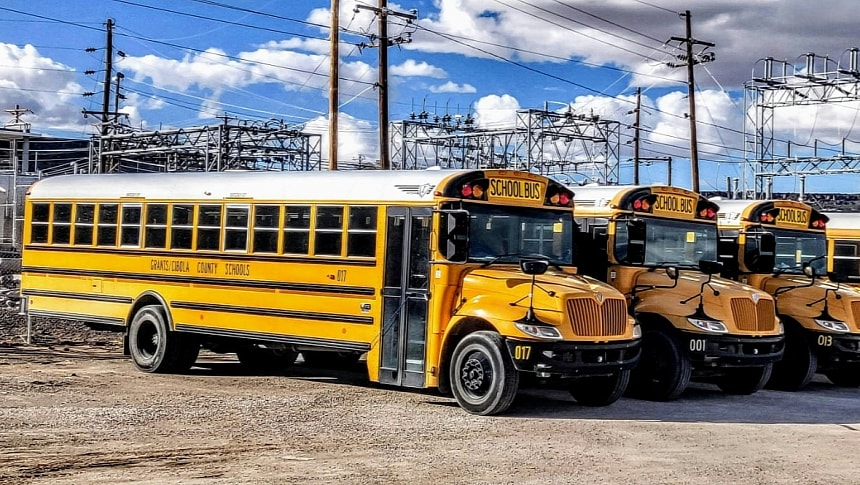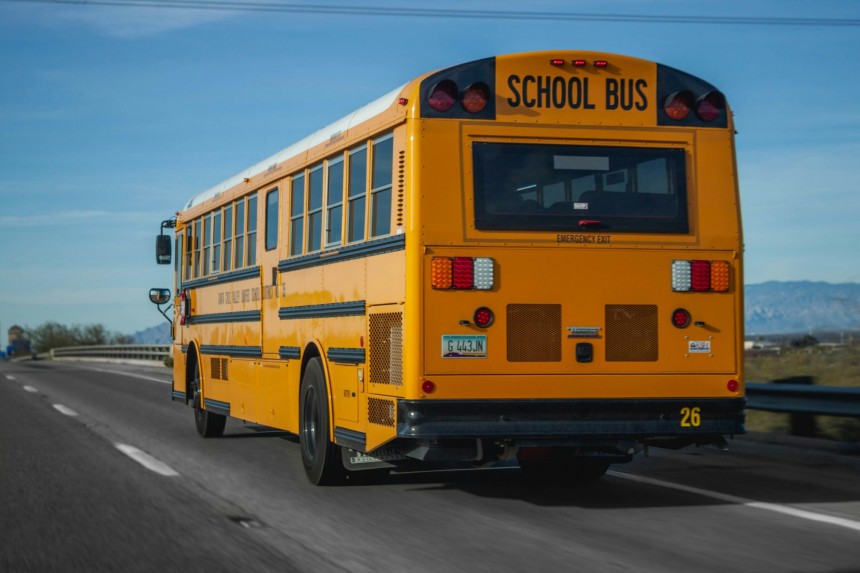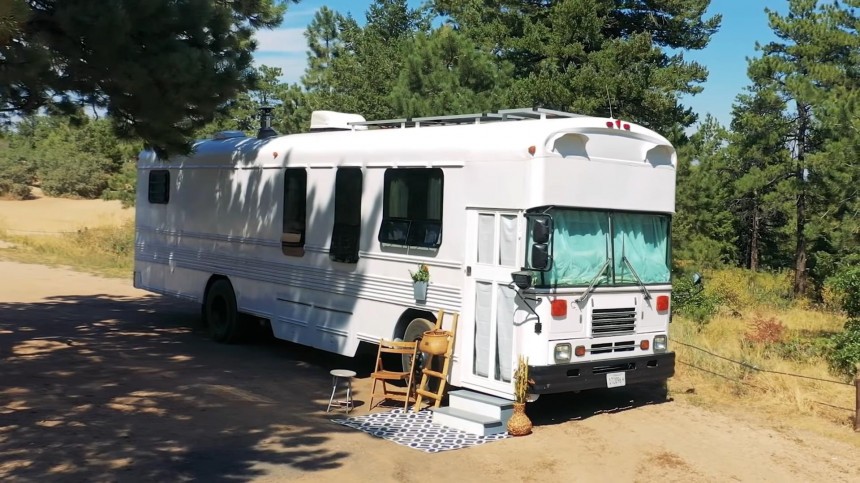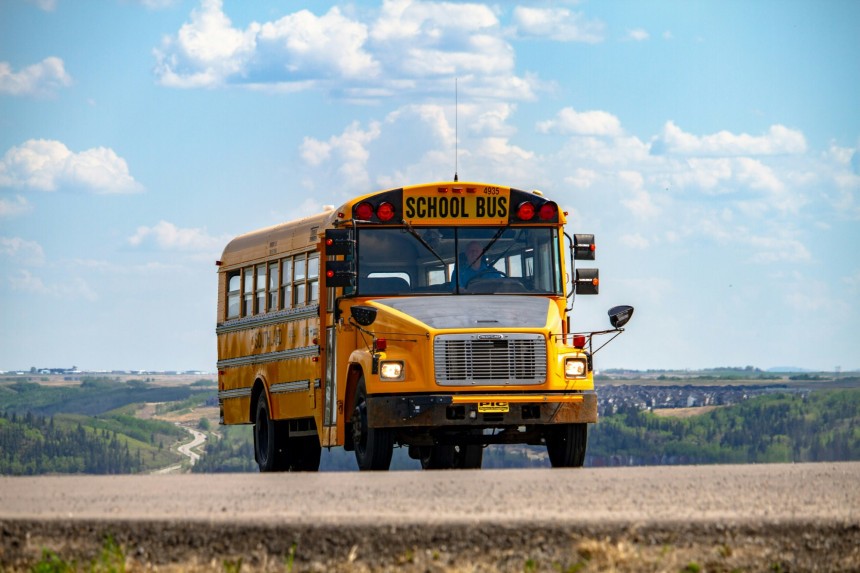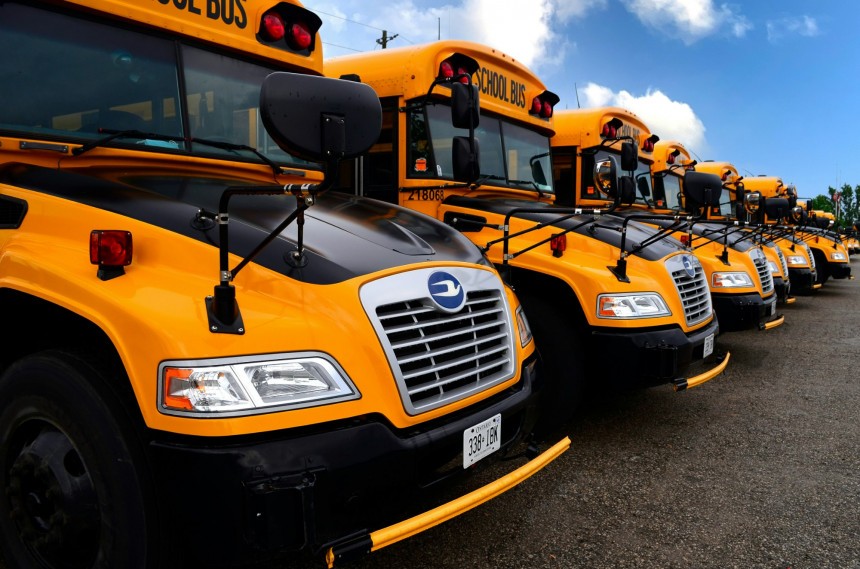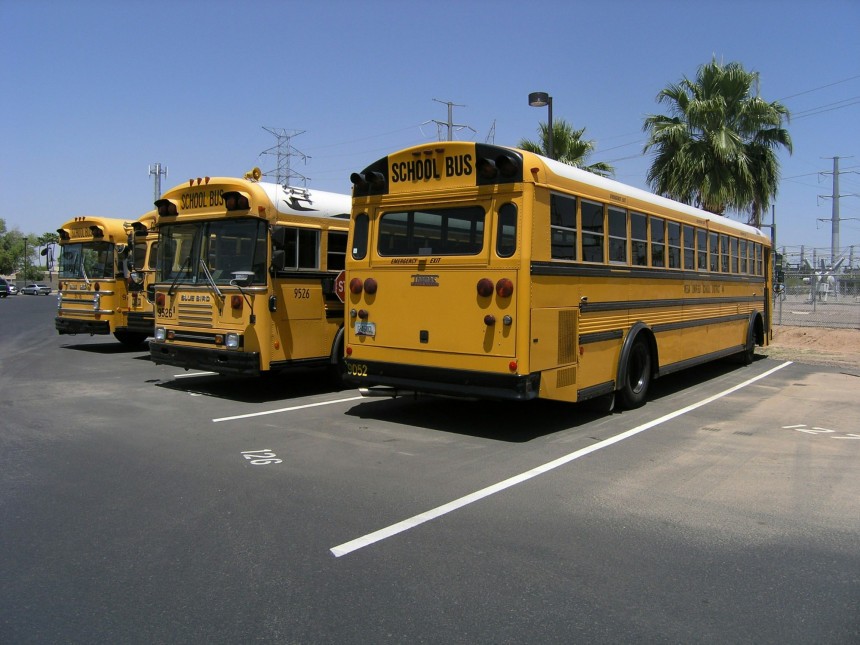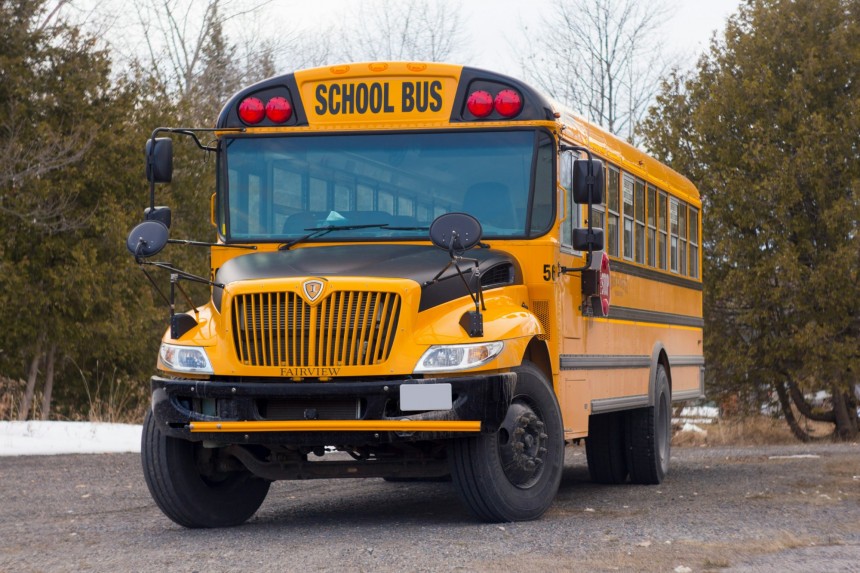If you're interested in buying a school bus or want to learn some tips and tricks to make the best purchase possible, you've come to the right place. You've probably seen many cool conversions online, but there's a long way to go till a school bus can look like that. I will help you get over the first step: purchasing a school bus.
Although research isn't as exciting as actually getting to work, it's a critical part of the process. You're already on the right path since you're here reading this article.
A month ago, I wrote about why skoolies and ambulances are worthy camper van alternatives. In that article, I discussed the types of skoolies, such as dog-nose and flat-nose, and their pros and cons.
Today, I'll delve even deeper into the topic and talk about the things to consider before purchasing a used school bus, as well as how you can find the right bus for your wants and needs.
Before we go into detail regarding school buses, I believe it's crucial for you to figure out your exact needs and wants. Of course, you already have an idea of what you desire, but I think it would be even more helpful to write them down.
So, I have prepared a few questions you should know the answer to before you start looking for a bus. In fact, the answers to these questions will determine exactly what kind of bus is right for you.
If you stumble upon a used bus in fantastic shape and with some excellent specs, you can expect its price to surpass the $20,000 to $25,000 range. Heck, you can even get to $50,000 and more, although that's probably not the best option for a conversion.
It all depends on how much time and energy you want to invest in the conversion. For instance, if you don't mind getting your hands dirty and you have some technical skills, you could probably do away with a $2.5K bus and turn it into an almost new rig. Do keep in mind that the lower the price of a used bus is, the higher the chance of finding a lot of rust or a source of mechanical issues, something you definitely should avoid at all costs.
I recommend not to cheap out and spend a little more to ensure you have a fantastic foundation for your mobile home. You usually get what you paid for. Also, don't be fooled by a bus's exterior looks – make sure to check every nook and cranny – I'll present more info about the inspection process later in this article.
However, if you want to know a figure, let's say you can expect to spend about $20,000 to $30,000 to convert a used school bus into a home on wheels.
If you plan on traveling to campsites or RV parks, you should know that many places will not allow skoolies. Those that will let you in will charge you some parking fees, which can run anywhere from $300 to more than $1,000 each month.
Of course, you also have living expenses – besides the costs we're all accustomed to, like food, entertainment, etc. You must also consider utility costs like electricity, propane, Wi-Fi, and more. One of the best ways to reduce utility costs is to invest in installing a solar system.
Finally, you have the maintenance costs – I'll discuss more about what the maintenance of a used school bus involves.
Again, there's no best option. Here's one helpful tip: always inspect the rig before purchasing it. Because of this, buying a bus from an auction is not recommended, as you don't get to peek at the bus you're bidding on. I'm not saying you can't find a good option at an auction, but there are greater risks involved than with other options.
So, regardless of where you find a school bus, make sure to thoroughly inspect it. And that brings me to my next point.
I'm going to talk about the most important parts of the inspection. Generally, it's best to bring a mechanic or someone with knowledge about school buses, or at least someone who knows their way around vehicles.
If properly maintained, a school bus diesel engine will last a very long time. A good idea is to get maintenance records from where you're buying the rig to ensure the vehicle was blessed with routine maintenance. Moreover, this way, you can determine what major repairs or replacements need to be done.
But how much rust is too much? When there are holes through the metal or if you notice significant pitting that has changed the surface of the metal, it's generally too much. Furthermore, if you find major pitted rust in the undercarriage or side skirts, you should avoid that vehicle.
There's a high possibility of encountering some surface rust – this one can be treated with a grinder and protective coating, such as Rustoleum. The goal should, however, be to get it sealed back up and painted.
Please don't underestimate the importance of this step. Check underneath the chassis, the U-joints, axles, and wherever you can get to. Even if you find a fantastic deal, you might buy a money pit if you don't discover all the rusty sports.
For instance, check the fluid levels, including the antifreeze, oil, and coolant levels. Are they low? How thick are they? A good idea is even to smell the fluids – they shouldn't smell burnt.
The oil shouldn't have any particles or remnants of metal flakes. Moreover, it should be very dark or black and smell like diesel.
Then, make sure the clamps and hoses inside the engine bay are in good condition. The same goes for the belts. Moreover, ensure there's nothing leaking under the engine, and look for signs of damage that indicate the bus has been in a crash.
Needless to say, it's a must to take the bus for a test drive. Not only do you need to "feel" the bus and see how comfortable you are with it, but it's also helpful in determining if the engine, transmission, and other parts work as they should – a good idea is to drive it for at least 30 minutes to an hour, if possible,
In the case of the engine, it should start right up with no hesitation or stalling. Then, listen for any irregular sounds and watch the RPMs of the engine to see if there are any instabilities,
It would be easier to go for a bus with an automatic Allison transmission, which is quite popular among school buses.
If it's your first time driving with air brakes, you should take a bit of time to get used to them. Furthermore, you could watch a video to learn what to expect and understand how to operate them before you go for a test drive.
Regardless of what type of brakes the school bus has, make sure to do a visual inspection. Regarding hydraulic brakes, look for fluid leaks from the brake manifold to all the brakes – these leaks can cause brake failure.
Checking air brakes is a bit more complicated, but it isn't rocket science. Check for oil residue around the many air fittings – that's a sign of a leak.
To test them, start the bus and let it build pressure – you should hear a "psssh" of air at around 120-125 psi. That's normal. Then, with the engine still running and the parking brake set, pump the brakes several times, and your air gauge should drop to about 90 psi.
Next, the air pressure needle should rise to 120-125 psi, and you should hear the same sound as earlier. Now you know that the governor and air compressor operate correctly. The last step is to turn off the bus when the system is fully pressurized and then walk around the vehicle and listen for leaking air.
Whether you're dealing with hydraulic or air brakes, you should perform basic and emergency stopping. How does the bus respond? Does it pull to one side while braking? Is it slow to stop? If not, then you're good to go.
Check the overall condition of the tires and whether or not they have dry rot (cracks in the sidewalls). Look for the 4-digit DOT number on the tire, which is present only on one side. The first two numbers are the week, and the last digits represent the year when the tire was manufactured.
As a general rule, if the tire is six years or older from the DOT date, the safest way would be to replace it regardless of the wear. Even if the tire wasn't used, the rubber still goes. Oh, and remember to check the wheel wells, too.
Due to the sheer number of wires inside the bus, electrical issues can be challenging and time-consuming to solve. Moreover, check the sensors to see if they all work.
Treat a school bus inspection like a home inspection. There's no such thing as asking too many questions, especially if you can't see the bus. However, I can't recommend enough to go and check out the rig in person and test.
It's fine if you don't know what you're doing. In that case, find a reputable heavy-duty in the area and make an appointment with the bus. If the owner/dealer refuses, they're most likely hiding something.
Here are some question you should ask:
Before checking the bus out, research the exact make, model, engine, transmission, and size. You might discover the engine isn't that reliable or that a specific model typically has a lot of issues.
If the bus passes your thorough inspection, try your luck at negotiating – you might be surprised by how much you can lower the price. Of course, do it so respectfully.
Even if you're knowledgeable about buses, having an extra specialized pair of eyes take a look doesn't hurt.
If the bus is fine, the seller seems trustworthy, and the price is right, you can seal the deal. Lastly, remember to celebrate. You got a long road ahead with the conversion, but you just overcame the most critical step.
A month ago, I wrote about why skoolies and ambulances are worthy camper van alternatives. In that article, I discussed the types of skoolies, such as dog-nose and flat-nose, and their pros and cons.
Today, I'll delve even deeper into the topic and talk about the things to consider before purchasing a used school bus, as well as how you can find the right bus for your wants and needs.
Before we go into detail regarding school buses, I believe it's crucial for you to figure out your exact needs and wants. Of course, you already have an idea of what you desire, but I think it would be even more helpful to write them down.
So, I have prepared a few questions you should know the answer to before you start looking for a bus. In fact, the answers to these questions will determine exactly what kind of bus is right for you.
- What's your budget?
- How far can you go to demo a bus/ pick it up?
- Where are you going to build out your bus? At home, or do you have a garage?
- Do you have all the necessary tools? How about the skills to complete a DIY project? If not, do you know people who can help you?]
- What type of traveling do you want to do? Are you going to use it full-time or part-time?
- How many people will you travel with?
How much does a skoolie cost?
Costs can significantly vary for school buses – it boils down to what type of vehicle it is (type and size), its condition, what engine it sports, and more. A used bus can cost between $2,500 and $7,500.If you stumble upon a used bus in fantastic shape and with some excellent specs, you can expect its price to surpass the $20,000 to $25,000 range. Heck, you can even get to $50,000 and more, although that's probably not the best option for a conversion.
It all depends on how much time and energy you want to invest in the conversion. For instance, if you don't mind getting your hands dirty and you have some technical skills, you could probably do away with a $2.5K bus and turn it into an almost new rig. Do keep in mind that the lower the price of a used bus is, the higher the chance of finding a lot of rust or a source of mechanical issues, something you definitely should avoid at all costs.
I recommend not to cheap out and spend a little more to ensure you have a fantastic foundation for your mobile home. You usually get what you paid for. Also, don't be fooled by a bus's exterior looks – make sure to check every nook and cranny – I'll present more info about the inspection process later in this article.
How much does a conversion cost?
Here's where it gets even more complicated to estimate costs – that's because each person wants different stuff. What's more, if you get two people to build the exact same bus, they will undoubtedly end up with different costs, as we all have our strengths and drawbacks when it comes to technical skills, negotiation, and more.However, if you want to know a figure, let's say you can expect to spend about $20,000 to $30,000 to convert a used school bus into a home on wheels.
Other costs
Besides the base vehicle and conversion costs, there are other expenses you should keep in mind. The first one that will come to mind is fuel – again, it will depend on what type of bus and engine you have, but fuel costs will be high, as school bus engines aren't that efficient.If you plan on traveling to campsites or RV parks, you should know that many places will not allow skoolies. Those that will let you in will charge you some parking fees, which can run anywhere from $300 to more than $1,000 each month.
Of course, you also have living expenses – besides the costs we're all accustomed to, like food, entertainment, etc. You must also consider utility costs like electricity, propane, Wi-Fi, and more. One of the best ways to reduce utility costs is to invest in installing a solar system.
Finally, you have the maintenance costs – I'll discuss more about what the maintenance of a used school bus involves.
Where to search for used school buses
There are a bunch of places where you can find used school buses for sale, including government auction sites, Facebook Marketplace and other similar listing sites, social media groups, specialized school bus dealers, local school districts, and more. Here are some other options:- Craigslist or Kijiji (for Canada)
- Skoolie.net or other dedicated forums
- Skoolies for sale (Facebook Group)
- Lasvegasbussales.com
- NWbus.com
So, regardless of where you find a school bus, make sure to thoroughly inspect it. And that brings me to my next point.
How to inspect a school bus
Properly inspecting a standard car can be a challenge. You can imagine that dealing with a much larger vehicle, such as a school bus, makes things even more difficult. But again, if you do your research and know what to look for, you can succeed in finding a great base vehicle.I'm going to talk about the most important parts of the inspection. Generally, it's best to bring a mechanic or someone with knowledge about school buses, or at least someone who knows their way around vehicles.
Mileage
Of course, the lower the mileage, the better. At the same time, an old vehicle with little mileage isn't a good sign either.If properly maintained, a school bus diesel engine will last a very long time. A good idea is to get maintenance records from where you're buying the rig to ensure the vehicle was blessed with routine maintenance. Moreover, this way, you can determine what major repairs or replacements need to be done.
Rust
Rust is the school bus's nemesis. Although it's ideal for you not to find any rust on the school bus you want to buy, don't be alarmed if you do. It's unrealistic for a bus not to have any rust, at least when dealing with buses over 15 years of age.But how much rust is too much? When there are holes through the metal or if you notice significant pitting that has changed the surface of the metal, it's generally too much. Furthermore, if you find major pitted rust in the undercarriage or side skirts, you should avoid that vehicle.
Please don't underestimate the importance of this step. Check underneath the chassis, the U-joints, axles, and wherever you can get to. Even if you find a fantastic deal, you might buy a money pit if you don't discover all the rusty sports.
Engine
As I mentioned, it's best to bring someone who knows their mechanical stuff. Still, even if you don't have a clue of what you're looking at, there are still things you could check in the engine bay.For instance, check the fluid levels, including the antifreeze, oil, and coolant levels. Are they low? How thick are they? A good idea is even to smell the fluids – they shouldn't smell burnt.
The oil shouldn't have any particles or remnants of metal flakes. Moreover, it should be very dark or black and smell like diesel.
Then, make sure the clamps and hoses inside the engine bay are in good condition. The same goes for the belts. Moreover, ensure there's nothing leaking under the engine, and look for signs of damage that indicate the bus has been in a crash.
Needless to say, it's a must to take the bus for a test drive. Not only do you need to "feel" the bus and see how comfortable you are with it, but it's also helpful in determining if the engine, transmission, and other parts work as they should – a good idea is to drive it for at least 30 minutes to an hour, if possible,
In the case of the engine, it should start right up with no hesitation or stalling. Then, listen for any irregular sounds and watch the RPMs of the engine to see if there are any instabilities,
Transmission
When doing the test drive, consider how smoothly the gears change. Some transmissions start fine but tend to slip when reaching higher gears.It would be easier to go for a bus with an automatic Allison transmission, which is quite popular among school buses.
Brakes
When it comes to brakes, air brakes are the better option compared to hydraulic ones. However, you'll need to check your state laws for requirements for driving a rig with air brakes.If it's your first time driving with air brakes, you should take a bit of time to get used to them. Furthermore, you could watch a video to learn what to expect and understand how to operate them before you go for a test drive.
Regardless of what type of brakes the school bus has, make sure to do a visual inspection. Regarding hydraulic brakes, look for fluid leaks from the brake manifold to all the brakes – these leaks can cause brake failure.
Checking air brakes is a bit more complicated, but it isn't rocket science. Check for oil residue around the many air fittings – that's a sign of a leak.
To test them, start the bus and let it build pressure – you should hear a "psssh" of air at around 120-125 psi. That's normal. Then, with the engine still running and the parking brake set, pump the brakes several times, and your air gauge should drop to about 90 psi.
Next, the air pressure needle should rise to 120-125 psi, and you should hear the same sound as earlier. Now you know that the governor and air compressor operate correctly. The last step is to turn off the bus when the system is fully pressurized and then walk around the vehicle and listen for leaking air.
Whether you're dealing with hydraulic or air brakes, you should perform basic and emergency stopping. How does the bus respond? Does it pull to one side while braking? Is it slow to stop? If not, then you're good to go.
Tires
If you thought car tires were expensive, wait till you see bus tires. That's why you have to check to see the condition of the tires. If they all need to be replaced, that might significantly increase how much you'll have to invest in the school bus.Check the overall condition of the tires and whether or not they have dry rot (cracks in the sidewalls). Look for the 4-digit DOT number on the tire, which is present only on one side. The first two numbers are the week, and the last digits represent the year when the tire was manufactured.
As a general rule, if the tire is six years or older from the DOT date, the safest way would be to replace it regardless of the wear. Even if the tire wasn't used, the rubber still goes. Oh, and remember to check the wheel wells, too.
Wires
Make sure to check the wiring system, as rodents love to chew on wires. The main fuse panel is where mice and rats typically nest, as they can enter through an external access door. You might also find them around or under the steering column.Due to the sheer number of wires inside the bus, electrical issues can be challenging and time-consuming to solve. Moreover, check the sensors to see if they all work.
Treat a school bus inspection like a home inspection. There's no such thing as asking too many questions, especially if you can't see the bus. However, I can't recommend enough to go and check out the rig in person and test.
It's fine if you don't know what you're doing. In that case, find a reputable heavy-duty in the area and make an appointment with the bus. If the owner/dealer refuses, they're most likely hiding something.
- Why are you selling the bus?
- How long has it been in your possession?
- Do you have maintenance records?
- Have you carried out any maintenance work?
- Are you aware of any significant mechanical problems?
- Was the bus in any accidents?
- Were the engine/transmission ever repaired/rebuilt/replaced?
Before checking the bus out, research the exact make, model, engine, transmission, and size. You might discover the engine isn't that reliable or that a specific model typically has a lot of issues.
If the bus passes your thorough inspection, try your luck at negotiating – you might be surprised by how much you can lower the price. Of course, do it so respectfully.
Even if you're knowledgeable about buses, having an extra specialized pair of eyes take a look doesn't hurt.
If the bus is fine, the seller seems trustworthy, and the price is right, you can seal the deal. Lastly, remember to celebrate. You got a long road ahead with the conversion, but you just overcame the most critical step.
